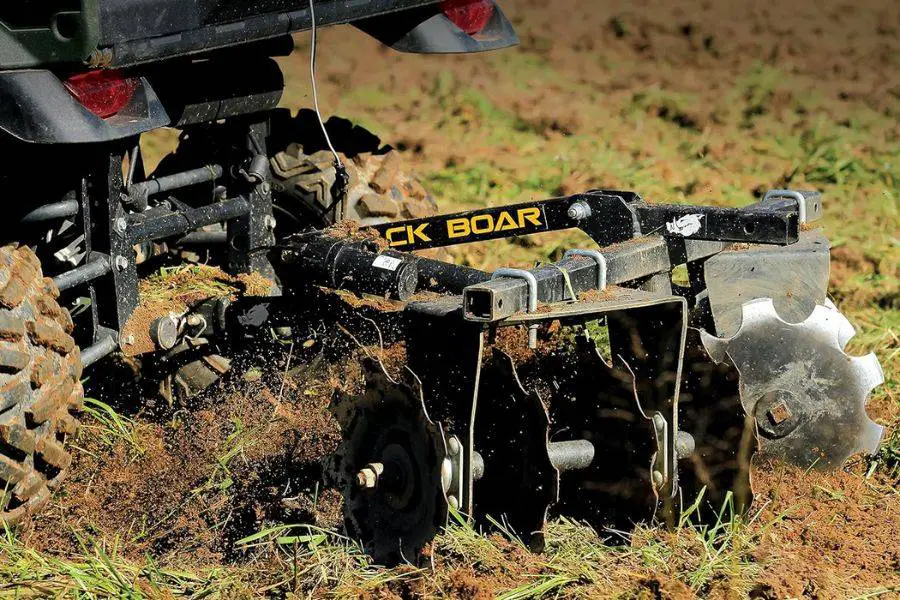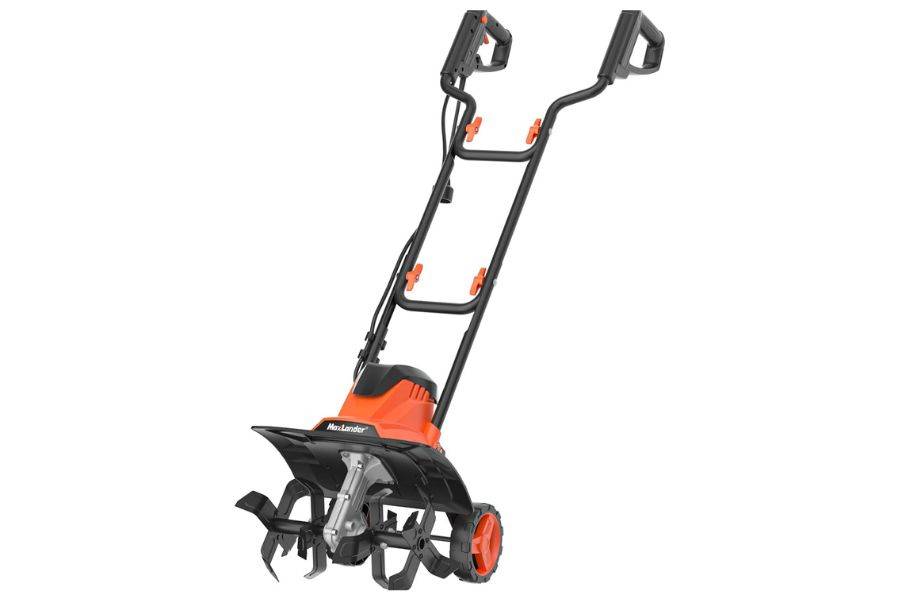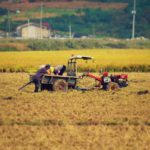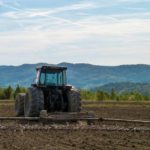Table of Contents
In the world of agriculture and homesteading, preparing the soil is a foundational step towards a successful harvest.

Disk harrows and tillers are pivotal tools in this process, each with distinct advantages and applications.
This detailed comparison aims to guide homestead owners through the nuanced differences between these tools, considering a variety of criteria to ensure an informed decision that aligns with their specific needs.
Overview of Soil Cultivation Tools
Understanding Disk Harrows
Disk harrows employ a series of concave metal discs to cut through the soil. These discs, arranged in sections, can be set at various angles to control the aggressiveness of the cut.
Disk harrows are particularly effective for breaking up and leveling heavy, compacted soils, as well as incorporating organic materials into the soil, which can improve its fertility and structure over time.
Understanding Tillers
Tillers utilize rotating tines or blades to penetrate the soil, breaking it apart and mixing it to create a fine, crumbly texture ideal for planting.
They can be powered manually or by gasoline engines, depending on the model.
Tillers are favored for their ability to thoroughly aerate the soil, promote drainage, and prepare an excellent seedbed, especially in smaller or medium-sized gardens.
Efficiency in Different Soil Types
Disk harrows excel in conditions where the soil is heavily compacted, full of clods, or has a significant amount of residue from previous crops.
Their design allows for cutting through tough soil and heavy organic material, breaking it down over successive passes without overly disturbing the soil structure beneath.
Conversely, tillers are most efficient in looser, less compacted soils.
Their rotating tines can struggle against very hard or rocky soils but work exceptionally well in sandy or loamy soils, where they can quickly achieve a fine tilth suitable for most crops.
Effectiveness in Weed Control
The action of a disk harrow, slicing through the soil and turning it over to some extent, can effectively bury weeds and weed seeds, disrupting their growth cycle.
However, this may also bring dormant seeds to the surface, potentially increasing future weed issues. Tillers offer a different approach by thoroughly mixing the soil and uprooting existing weeds.
While this can provide immediate weed control, the disturbance to the soil can also encourage the germination of weed seeds, necessitating further weed management strategies.
Impact on Soil Health
Disk harrows have a comparatively lighter impact on soil health. By not inverting the soil layers significantly, they help preserve the natural soil structure and the beneficial organisms within it.
This can be particularly important for maintaining long-term soil health and fertility.
Tillers, while excellent for mixing amendments into the soil and improving aeration, can disrupt soil structure and harm beneficial microorganisms if used excessively.
Over-tilling can lead to soil compaction in subsequent layers, reducing its permeability to water and air, which are vital for healthy plant growth.
Suitability for Different Land Sizes
For large acreages, disk harrows are the more practical choice. Their ability to be towed behind a tractor and cover wide swaths of land efficiently makes them ideal for extensive agricultural operations.
Tillers, given their smaller size and the more labor-intensive nature of their operation, are better suited for smaller plots.
They allow for precise soil preparation in areas where larger equipment cannot maneuver effectively, such as small vegetable gardens or flower beds.

Versatility and Additional Uses
Disk harrows offer versatility beyond initial soil preparation. They can be used in the fall to incorporate crop residues into the soil, aiding in their decomposition over the winter.
In the spring, a lighter pass can help prepare the seedbed without deeply disturbing the soil structure.
Tillers, on the other hand, are invaluable for homesteaders looking to incorporate compost, manure, or other soil amendments.
Their ability to mix these materials thoroughly into the topsoil layer prepares a nutrient-rich environment for plant roots.
Ease of Use and Operator Comfort
Operating a disk harrow attached to a tractor requires minimal physical effort from the operator, making it more comfortable for covering large areas.
The main considerations are the adjustment of the disk angles and the monitoring of soil conditions to avoid compaction.
Tillers require more physical involvement, particularly handheld models, which can be strenuous to use over extended periods.
Self-propelled tillers reduce this burden somewhat but still demand active engagement from the user to guide the machine accurately.
Environmental Considerations
The environmental impact of using disk harrows versus tillers varies.
Disk harrows, by facilitating the incorporation of organic matter into the soil, can enhance its carbon sequestration capacity and support a healthier soil ecosystem.
Tillers, due to the risk of over-tilling, might contribute to soil erosion and loss of organic matter if not used judiciously.
Proper management and timing of tillage operations can mitigate these risks, preserving the soil’s health and its ability to support sustainable agriculture.
Maintenance and Longevity
Both disk harrows and tillers require regular maintenance to ensure their longevity and effectiveness.
For disk harrows, this includes checking the integrity of the discs, ensuring they are sharp and free from damage, and maintaining the bearings and frame.
Tillers need routine checks of the tines for wear, proper lubrication of moving parts, and, for motorized models, engine maintenance according to the manufacturer’s recommendations.
Cost Analysis
The initial investment for disk harrows can be higher, especially for models designed to be towed by tractors, reflecting their larger size and complexity.
However, their durability and lower maintenance requirements can make them more cost-effective over time for those with large areas to manage.
Tillers, with a lower initial cost, particularly for manual or smaller models, offer an affordable option for homesteaders focusing on smaller plots.
The ongoing costs for fuel and maintenance, particularly for engine-powered tillers, should also be considered in the overall cost analysis.
Seasonal Flexibility

The ability to adapt to different seasonal requirements is crucial for maximizing the productivity of a homestead. Disk harrows offer considerable flexibility in this regard.
They can be used in the fall to incorporate crop residues, which helps improve soil structure and fertility for the next planting season.
In the spring, a lighter pass with a disk harrow can prepare the seedbed without turning the soil too deeply, preserving moisture and preventing weed seeds from surfacing.
Tillers, while highly effective for spring soil preparation and creating fine seedbeds, may not be as versatile for fall soil management.
Their intensive mixing action is best suited for incorporating amendments and preparing the land right before planting, rather than for managing post-harvest residues.
Fuel Efficiency and Energy Use
For homestead owners concerned about sustainability and operational costs, the energy efficiency of their cultivation tools is an important factor.
Disk harrows, when used with a tractor, rely on the tractor’s fuel efficiency and can cover large areas without requiring significant additional energy, making them relatively fuel-efficient for the amount of land they can manage.
On the other hand, tillers, especially those that are gas-powered, have varying levels of fuel efficiency based on their engine design and the intensity of use.
Electric models offer an alternative with potentially lower operating costs and reduced environmental impact, but they may lack the power needed for tougher soils or larger areas.
Manual tillers eliminate fuel use altogether but require considerable human effort, which may not be practical for all users or for larger plots.
Conclusion
Choosing between a disk harrow and a tiller involves careful consideration of the specific needs and conditions of the homestead.
Factors such as the size of the area to be cultivated, the type of soil present, the desired impact on soil health, and budget constraints all play critical roles in this decision.
By understanding the strengths and limitations of each tool, homestead owners can select the most appropriate equipment to optimize their soil preparation efforts, paving the way for a productive and sustainable growing season.








